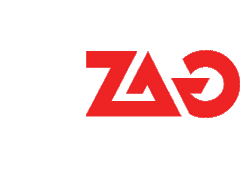
Improving Agency Profits with Real-time Resource Management
Solid resource management is crucial for all businesses working today. Whether it’s maintaining adequate financial resources, creative talent, or IT infrastructure elements, a strong grasp of where a business stands with each of these elements can make or break firms across a variety of industries. Perhaps most importantly, resource management has a direct impact on a company’s profitability—it’s financial bottom line.
When considering profitability, the ad industry contains some special considerations that pertain to resource management, especially given recent shifts in the organization of the industry overall. Given its turn toward shorter-term engagements over the Agency-Of-Record (AOR) relationships that had previously dominated the business, the ad agency world is now marked by fast-paced workflows, quicker turnaround times, and an overall sense of flexibility. Generally, this trend was perhaps best described as part of The Agility Era, a phrase that captures the new preference for flexibility and streamlined production overstable and unshakable client relationships.[1] What does this mean, then, for resource management and profitability?
For agencies, doubtless the keyword in “The Agility Era” is “Agile,” a term that conjures the Agile working methodology. Agile, which is now a standard in the creative industry, is mostly known for its use across technology fields, especially in software development. More specifically, Agile refers to the use of flexible working modes in which “solutions evolve through the collaborative effort of self-organizing and cross-functional teams and their customer/end users.”[2] Requirements can change and evolve over the course of a project. Creative teams can be assembled in a more ad hoc manner, while other resources such as finances are often calculated and accounted for on the fly. In order to manage these behaviors, resource management must happen in real time.
This article looks at this requirement for agencies to allocate resources “on-the-fly,” otherwise known as real-time resource management, and its impacts on overall profitability. Resource management becomes more important as demands shift and change over time. In turn, the adequate use of resources makes a direct impact in terms of profitability. Here we’ll look at how project managers and executives can gain valuable visibility into resource management through an effective Enterprise Resource Planning (ERP) solution. Specifically, we’ll see how centralized visibility into capacity planning, timesheet management, and project analytics can lead to direct increases in profitability.[3]
One of the most important resources that every business will need to manage is its own workforce. With the Agile landscape of the ad agency, this requirement is only further amplified due to the constant need for team flexibility. For instance, let’s say a project manager needs a designer for a short-run project. But the best designer for the job is already scheduled for two large-scale projects expected to wrap up soon. Luckily, though, one of these projects is completed ahead of schedule, leaving the designer with some extra room in her schedule prior to the end of the quarter.
With direct insight into capacity planning using an effective ERP solution, a savvy project manager can utilize the designer’s extra availability with real-time access to data. In this case, the ability to find the right talent for a project leads to direct improvements in profitability. This is a situation every executive desires for her/his agency: better organization, higher productivity, and, ultimately, increased profitability.
Another area of resource management that impacts agency profitability is the real-time updating of work-hour time entries for a team. It may seem straightforward. Each team member enters her/his work hours as a project unfolds. At the end of each pay cycle, the team members ahave compensated accordingly. (There are of course variations on this where permanent team members receive salaries.) What can improve this process do to help with profitability?
The answer is that with real-time resource management, a project manager or executive can gain visibility into just how much resources a specific project is demanding relative to its current revenue. If there are a large number of work hours relative to the overall budget, an effective project manager can check to see if team members have completed integral requirements. If the requirements have already been met, there’s a chance that someone on the team is indulging in “gold plating,” the practice of needlessly refining a feature to the detriment of profitability.
Fixing such issues—in real-time—is a direct path to improving project profitability. Still, there are other measures that agencies can take to increase their bottom lines. Another important feature of an effective ERP solution is, for instance, project analytics. Analytics can give a project manager or executive real-time figures for a project that display projected profits, work-hours, team activity, burn-down rates, and metrics based on the behavior of clients. Using these analytics, along with capacity planning, timesheet management, and other resource management metrics, can greatly improve profitability for agencies today—especially given the broad shifts toward flexibility seen throughout the industry.
